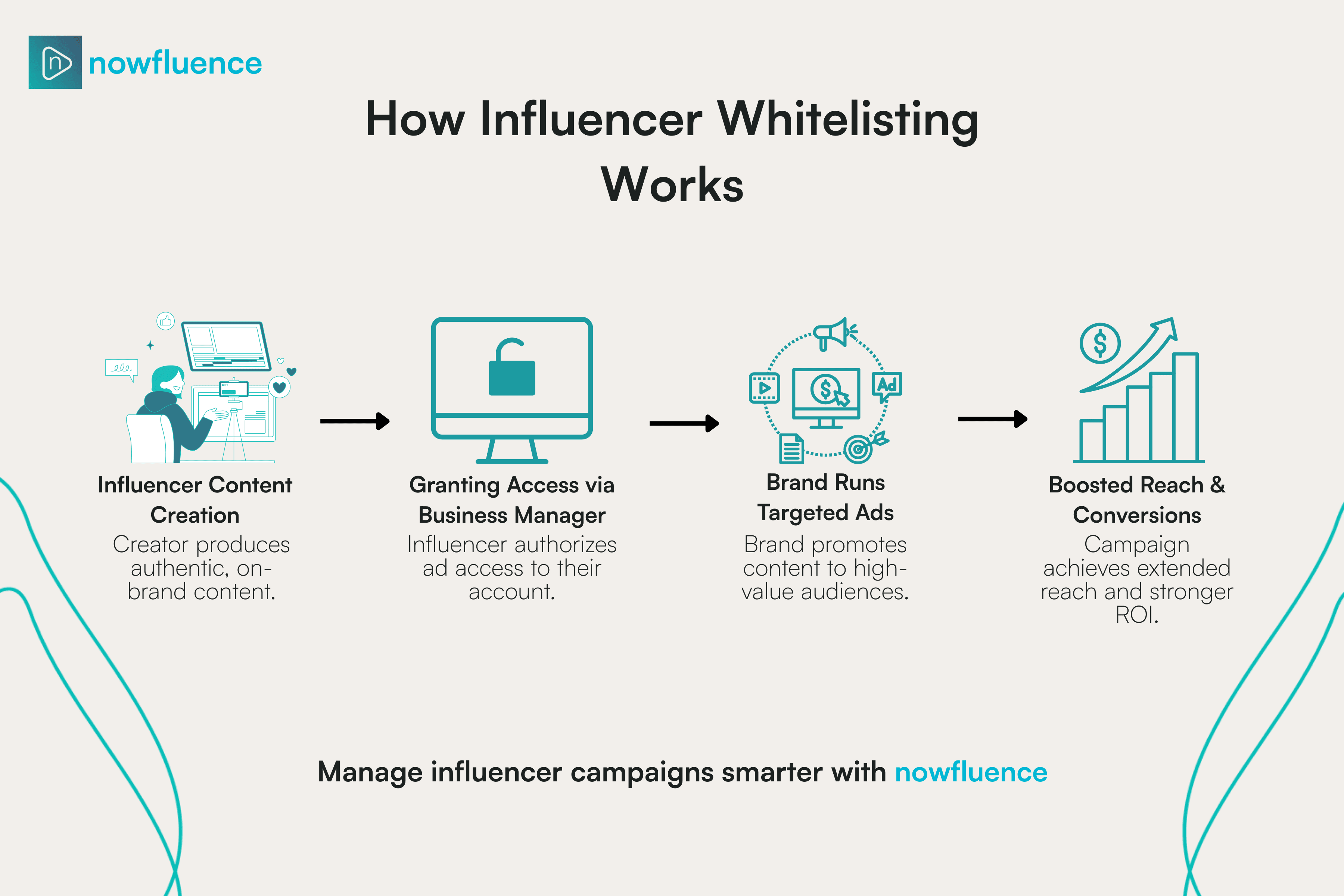Why Influencer Whitelisting Is a Game-Changer for Paid Media
Discover why influencer whitelisting outperforms organic posts. Learn benefits, best practices, and how to scale paid social campaigns with creators.
August 14, 2025
In today’s competitive digital landscape, brands can no longer rely solely on organic influencer posts to achieve measurable results. Enter influencer whitelisting, a strategy that allows brands to run paid ads through a creator’s handle, reaching new audiences with the combined power of influencer trust and paid targeting precision.
When executed correctly, influencer whitelisting can dramatically boost engagement rates, lower acquisition costs, and maximize ROI on paid media campaigns.
What Is Influencer Whitelisting?
Influencer whitelisting is when a creator grants a brand advertising permissions to their social media account through the platform’s ad manager (e.g., Meta Business Manager).
This means the brand can:
- Run ads from the influencer’s profile
- Target specific audiences using paid media tools
- Use the creator’s content in multiple paid placements
The end result: audiences see ads that look and feel like native influencer content, but with the strategic targeting and scalability of paid campaigns.

Why Whitelisting Beats Organic Posts Alone
Organic influencer posts are great for authenticity, but they’re limited by:
- Platform algorithms that restrict reach
- Short-lived visibility (often just 24–48 hours)
- No granular audience targeting
Whitelisting addresses these challenges by:
- Extending content life span through paid promotion
- Testing multiple creatives and messaging variations
- Scaling top-performing posts to high-value audiences
Key Benefits for Brands
1. Higher Engagement and Conversion Rates
Ads from an influencer’s handle feel more authentic and trusted than brand-run ads, leading to better CTR and conversion performance.
2. Advanced Targeting Options
Use platform tools to retarget warm audiences or find lookalike audiences that mirror your best customers.
3. Creative Testing at Scale
Run A/B tests using different influencer creatives to quickly identify winning formats.
4. Optimized Budget Allocation
Invest more in the content that’s already proving to perform, instead of guessing.

Best Practices for Influencer Whitelisting
- Select the Right Creators
- Choose influencers whose audience matches your ideal customer profile. To make sure they deliver the right content for your ads, check out our Complete Guide to Influencer Briefs.
- Be Transparent
- Clearly outline whitelisting terms in influencer contracts.
- Use Multiple Creatives
- Don’t rely on one piece of content; test variations.
- Monitor and Optimize
- Track performance metrics daily and adjust targeting or budget accordingly.
Final Thoughts
Influencer whitelisting is more than just a buzzword. It’s a powerful way to blend authentic creator content with high-performance paid media tactics.
When managed in a streamlined, transparent way, it can become one of the highest ROI strategies in your marketing mix.
With nowfluence, brands can manage influencer relationships, approvals, contracts, and payments, making it easy to integrate whitelisting into your campaigns without operational headaches.
Want to discuss insights from this study? Reach out to our research team.